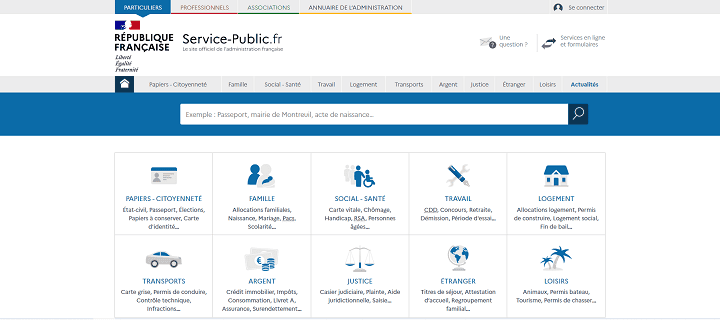The Service-public.fr website is regularly in the top tier of the mobile webperf ranking that we produce each month with the Journal du Net. How does this site maintain the performance and loading speed of its pages? Accessibility, Core Web Vitals, server response time, availability… the issues are numerous. We slipped behind the scenes of the technical service to find out more.
Fasterize: How do you optimize your site’s performance and with what resources?
Service-public.fr : Web performance is at the heart of service-public.fr ‘s challenges , and has been since its conception. Loading speed has always been a priority, and it remained so for our redesign project in 2016. The website is based on a robust technical base, and on a technical team composed of 6 to 12 developers, 2 integrators, 1 RGAA expert for accessibility, and 1 Devops. Together, we ensure that the level of performance is constantly maintained and improved.
On the operational level, the team in charge of developments is also responsible for performance, it is the one that optimizes the product code (HTML, JavaScript, CSS, etc.). For certain specific needs, we call on external service providers to benefit from additional expertise on technical points, for example: management of the internal search engine, stress tests to evaluate our services during load increases, etc.
In terms of tools, our platform is based in particular on the open source solution Gatling, and we use the Jmeter tool to validate the performance of certain parts or services of the site, such as, for example, the loading speed of the search engine or other third-party elements…
Performance tests are carried out regularly, and an alerting system allows us to react when the indicators are no longer up to the thresholds we have defined.
What is the place of the notion of user experience in a public service approach?
Service-public.fr : The user is at the heart of our operating mode. For optimal quality of service and experience, all our developments are tested before each production launch. Users also have the opportunity to rate the quality of our services, and to provide comments that we take into account to develop and improve them. Naturally, the loading speed of our site pages is an integral part of the criteria that contribute to the quality of the user experience for our users. They must be able to access our services regardless of their browsing conditions.
Is the notion of performance central to the development of new tools, functionalities or services for citizens?
Service-public.fr : The goal is to provide the user with a response as quickly as possible. On our website, the user often only views one page: the bounce rate is therefore high.
Our goal is to provide this information in less than 200 ms , to encourage visitors to return and convey a positive image of our service. This performance objective is complementary to those of content relevance, accessibility and security.
What are the main technical difficulties you encounter, and what are the main levers for optimizing loading speed?
Service-public.fr : A large part of the site relies on an efficient cache system , which easily allows us to achieve the targeted performance objectives. To optimize the user experience, we make sure to compress and optimize images , and we limit content or files that could degrade loading speed. We also sometimes use APIs to bring up data or content that is relevant to our users, without having to reload the pages.
As the site contains content that depends on external partners (Meeting with the gendarmerie, Question on the electoral situation, etc.), we check their loading speed using performance tests. In the very rare cases where the content is not available, we plan not to deliver until the origin of the performance degradation is identified, treated and resolved, so that our performance remains up to par.
Also, to insert dynamic content while maintaining satisfactory behavior and loading speed for our users, we have implemented ESI (Edge Side Include) mashup techniques.
Finally, for certain parts of the site that may experience high traffic peaks (“ The Account ”, for example), we are planning a load shedding system to remain available even in the event of a rush, without having to deploy an overly costly infrastructure.
What are the priority performance objectives (loading speed and user experience), and what indicators do you rely on?
Service-public.fr : The weight of our web pages is relatively limited thanks to the optimizations that we put in place, and it is also linked to the fact that most of our content is in text format. In terms of traffic, we aim for 200 page views per second on the editorial part of the site, and 2 steps per second in the personalized space “The account”. To optimize the user experience, we focus on essential metrics, with objectives and limits. A concrete example: the server response time ( TTFB ) of the pages in the “Your rights” section must be less than 200ms for the 95th percentile. We monitor all of our performances continuously using dashboards and statistics during certain key periods: logs, hosting SOC, etc.
To sum up, we actively monitor both the backend and frontend aspects , as both are linked and important for fast web pages, so that all our users benefit from our services on all devices, in all geographies.
Did this feedback inspire you? We regularly meet experts!
If, like us, you are passionate about web performance, subscribe to our newsletter to learn their secrets and techniques:






















